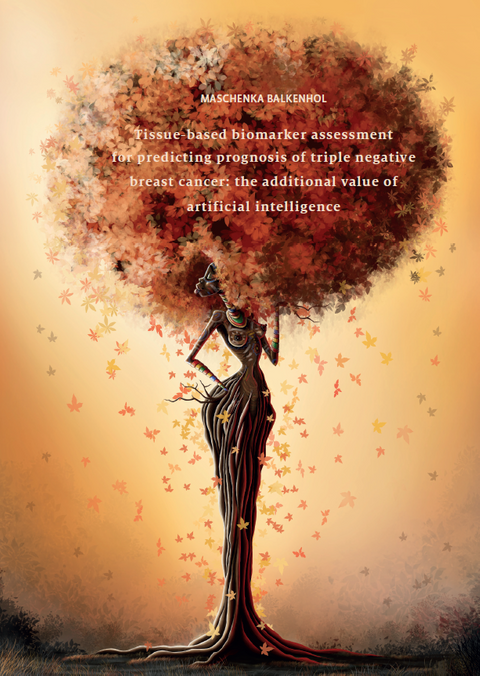Tissue-based biomarker assessment for predicting prognosis of triple negative breast cancer: the additional value of artificial intelligence
M. Balkenhol
- Promotor: J. van der Laak and N. Karssemeijer
- Copromotor: P. Bult and F. Ciompi
- Graduation year: 2020
- Radboud University, Nijmegen
Abstract
Despite much research, currently still about 1 in 4 patients with TNBC will develop a recurrence after which the survival outlook is very poor. To date, no prognostic markers are available for TNBC to adequately stratify patients for the risk of developing a recurrence. The emergence of powerful computer algorithms, in particular deep learning models, enable more in depth and more extensive biomarker exploration. In addition, these algorithms are objective and reproducible, in contrast to most human visual biomarker assessment. The first aim of this thesis was to establish a well-defined cohort of TNBC, consisting of tissue sections, clinical and pathology data as well as comprehensive follow up data. Secondly, we aimed to evaluate the prognostic value of the mitotic count, which has widespread clinical use as part of the Nottingham grading system. We studied mitotic count both via conventional manual assessment and automatic assessment, to see if we could find a cut-off value which is better tailored for TNBC. Our third aim was to evaluate the prognostic value of TILs, a promising biomarker not yet used in clinical practice.
To study the prognostic value of biomarkers in TNBC, the following objectives were defined:
-
Establish a multicentre TNBC cohort including tissue sections and follow up data (Chapter 2)
-
Develop a baseline prognostic model for TNBC based on the currently known clinicopathological variables (Chapter 2)
-
Establish a computer algorithm (Chapter 3) which can automatically find mitoses in WSI of breast cancer, and validate the algorithm (Chapter 4)
-
Explore the prognostic value of the mitotic count for TNBC using manual and automatic assessment (Chapter 5)
-
Optimize the assessment of tumour infiltrating lymphocytes using deep learning and study its prognostic value in TNBC (Chapter 6)
